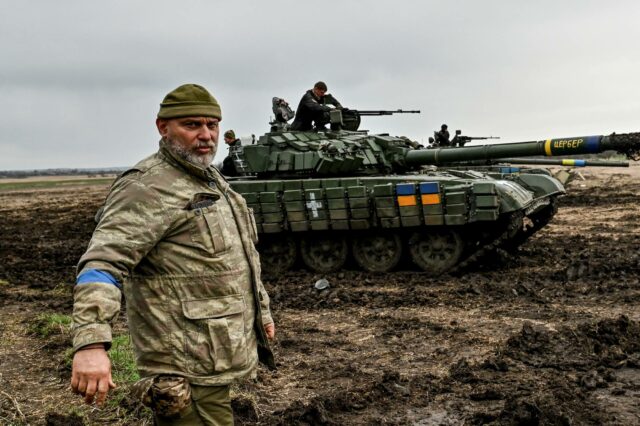
Bringing Russia Back From the Cold at Ukraine’s Expense (Part One)
Publication: Eurasia Daily Monitor Volume: 20 Issue: 89
By:

Following a RAND Corporation analysis (see EDM, February 10, Part One and Part Two), it is the turn of the Council on Foreign Relations to prescribe consigning Ukraine to defeat in the war and bringing the aggressor Russia back into the European concert of powers (Foreign Affairs, April 13).
The Biden administration is the prime audience of these recommendations ahead of the 2024 election year in which the White House will need to present some results of its policy, one way or another. These recommendations seek to drive Washington toward an “off-ramp” of its own that would reduce support for Ukraine and allow for turning to other priorities.
The proposed outcome is a territorial partition of Ukraine by agreement de facto with Russia. The partitions of the Korean peninsula and the island of Cyprus are explicitly cited as possible models (see Part Three). The diplomatic path toward an armistice-in-place is outlined rather clearly. This would be followed by negotiations between the West and Russia on a security order in Europe. That higher goal is mentioned in passing as being preconditioned on an armistice in Ukraine—namely, an armistice on Russian terms (see below).
Under this proposal, the war should “end” this year (2023). The United States and other Western countries should provide Ukraine with military equipment sufficient to achieve at least some gains on the ground, during one last “fighting season.” Notably, the authors propose delivering the long-range precision-guided ATACMS missile systems (which the Biden administration has withheld thus far), more battle tanks and other heavy equipment in larger quantities and at a higher tempo than has been the case. Ukraine’s expected “spring offensive” would take place in the summer and would end in the fall, one way or another.
The authors expect this offensive to result in only limited gains; they rule out the possibility of Ukraine regaining all the Russian-occupied territories. While this looks like a self-fulfilling prophecy, “incremental” and “calibrated” military support to Ukraine would guarantee that prophecy’s fulfillment in spite of Ukrainian valor.
Once this last fighting season winds down, the authors argue that Washington should be “ushering Moscow and Kyiv from the battlefield to the negotiating table.” With at least some Ukrainian battlefield gains, Russian President Vladimir Putin might “view a cease-fire and peace plan as a face-saving off-ramp.” This vocabulary (e.g., “ushering” and “face-saving”) echoes the White House’s disproved assumptions that Russia (“Putin”) was an object amenable to “off-ramps” and “parking,” instead of defeat on the battlefield.
The authors also admit the possibility that Russia would “agree to a cease-fire in order to pocket its remaining territorial gains but in fact has no intention of negotiating in good faith to secure a lasting peace settlement.” Given Russia’s track record, however, this possibility must be seen as a certainty.
“Later this year, a stalemate is likely to emerge along a new line of contact,” the authors write. The explicit assumption is that the new contact line would cut across Ukrainian territory. Nevertheless, “come the end of this fighting season, the U.S. and Europe [should] abandon their stated policy of supporting Ukraine for ‘as long as it takes.’” Instead, “Washington should start consultations with its European allies and with Kyiv on a diplomatic initiative to be launched later in the year [2023] … as Ukraine’s coming offensive reached its limits.”
The slogan of “supporting Ukraine for as long as it takes,” however, is not a “policy” but the evasion of one—so long as the administration stops short of clarifying “as long as it takes” to achieve what? Its answer has taken shape since about mid-2022: the preservation of an “independent and democratic Ukrainian state,” reduced in size and population, and without North Atlantic Treaty Organization membership or equivalent security guarantees. The proposals under examination fall in line with this answer.
These proposals imply, in part, a reiteration of the 2014 and 2015 Minsk armistice “agreements”—the first territorial amputation of mainland Ukraine—albeit without referencing them here. “Ideally, both Ukraine and Russia would pull back their troops and heavy weapons from the new line of contact, effectively creating a demilitarized zone. … The United Nations [UN] or the Organization for Security and Cooperation [OSCE] would send in observers to monitor and enforce the cease-fire and pullback.” This prescription omits the uncomfortable fact that any UN or OSCE mission would necessitate drafting its mandate together with the veto-wielding Russia. During the lifetime of the Minsk “agreements,” Russia vetoed a proposed UN observer mission (not to mention an “enforcement” one). It also vetoed an OSCE police mission along the partition line. And it shaped the mandate of the OSCE’s civilian-monitoring mission in ways that severely impaired its effectiveness, ultimately forcing its evacuation from Ukraine (just as it had done earlier with UN and OSCE missions in Georgia).



